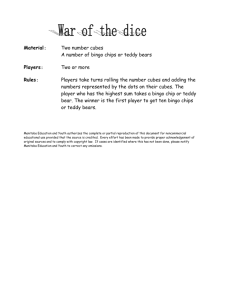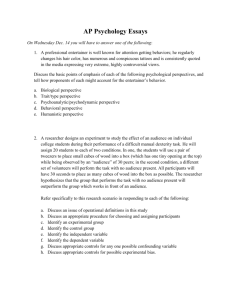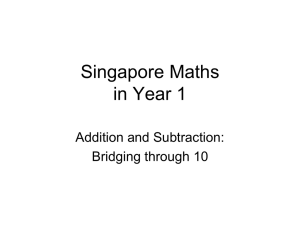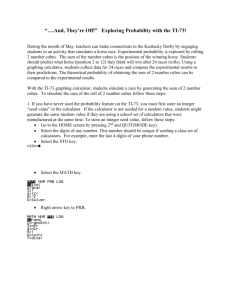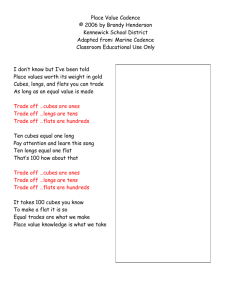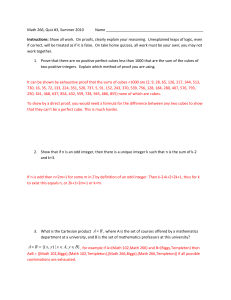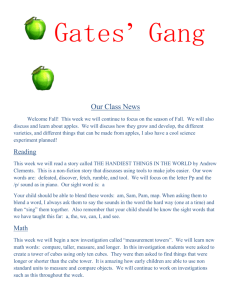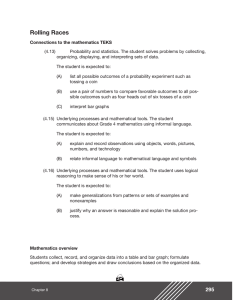Hands-On Place Value Cubes - Lakeshore Learning Materials
advertisement
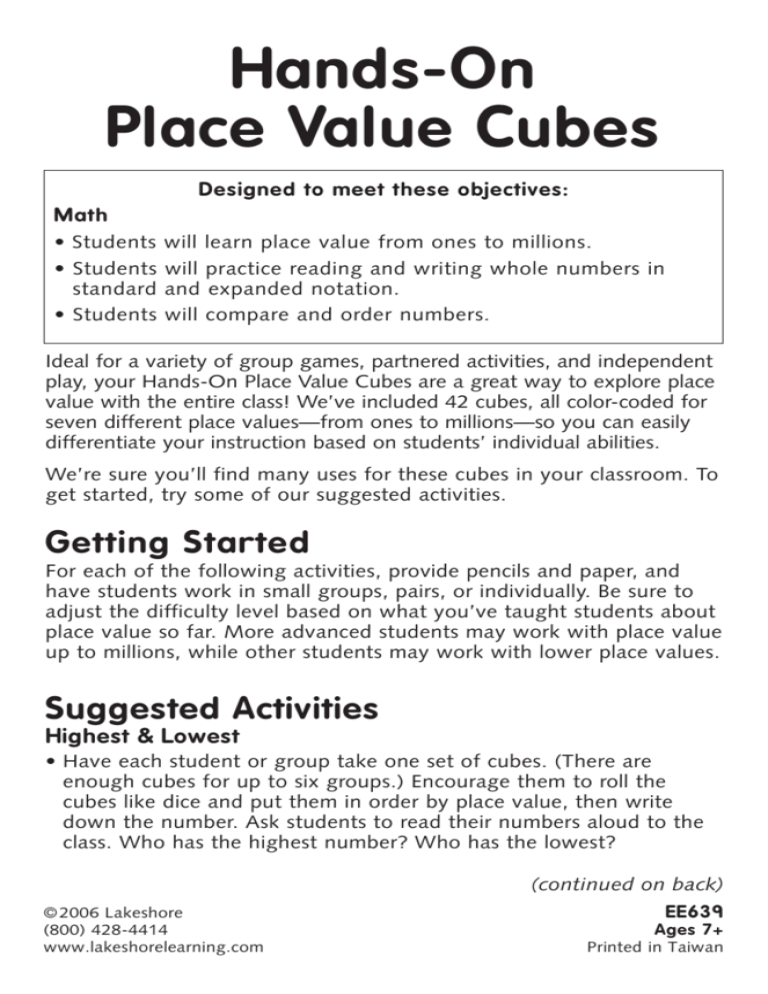
Hands-On Place Value Cubes Designed to meet these objectives: Math • Students • Students standard • Students will learn place value from ones to millions. will practice reading and writing whole numbers in and expanded notation. will compare and order numbers. Ideal for a variety of group games, partnered activities, and independent play, your Hands-On Place Value Cubes are a great way to explore place value with the entire class! We’ve included 42 cubes, all color-coded for seven different place values—from ones to millions—so you can easily differentiate your instruction based on students’ individual abilities. We’re sure you’ll find many uses for these cubes in your classroom. To get started, try some of our suggested activities. Getting Started For each of the following activities, provide pencils and paper, and have students work in small groups, pairs, or individually. Be sure to adjust the difficulty level based on what you’ve taught students about place value so far. More advanced students may work with place value up to millions, while other students may work with lower place values. Suggested Activities Highest & Lowest • Have each student or group take one set of cubes. (There are enough cubes for up to six groups.) Encourage them to roll the cubes like dice and put them in order by place value, then write down the number. Ask students to read their numbers aloud to the class. Who has the highest number? Who has the lowest? (continued on back) © 2006 Lakeshore (800) 428-4414 www.lakeshorelearning.com EE639 Ages 7+ Printed in Taiwan • Have students roll the cubes five times. Students should write down the number in place value order for each roll. Then, students circle the highest number and underline the lowest. For example, if they roll 745, 300, 111, 250, and 610, they would circle 745 and underline 111. Next, have students rewrite all five numbers in order from highest to lowest. Challenge: Have students figure out the largest difference between any of their two numbers! Greater Than & Less Than • Invite students to roll the cubes and write down the number in place value order. Have them roll twice so they get two different numbers, such as 348,965 and 832,711. • Next, have students write the two numbers side by side with a space in between. Have them write a >, <, or = sign between the numbers to make a true equation! Expanded Notation • Encourage students to roll the cubes and write down the number in place value order. Then, ask them to write the number in expanded notation. Addition & Subtraction • Ask students to roll the cubes twice and write the number in place value order for each roll. Then, have them add the two numbers together or subtract the lowest from the highest. For example, if students roll 1,346 and 2,561, they would add them to get 3,907, or subtract 1,346 from 2,561 to get 1,215. Have students write their numbers in a column to solve the problems: Guess the Number • Have students work in pairs. One student rolls the cubes and puts them in place value order where his or her partner cannot see them. Then, the partner tries to guess the number by asking questions, such as “Is the number greater than 1,000?” and “Is the number less than 1,200?”


